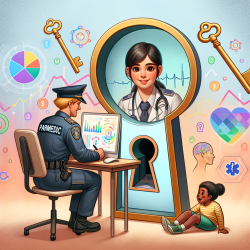Introduction
Sporadic hemiplegic migraine (SHM) is a rare and challenging condition that can mimic other serious neurological disorders, such as transient ischemic attacks and strokes. As a practitioner, understanding the nuances of SHM is crucial for accurate diagnosis and effective management. This blog post delves into the findings of a recent research article on SHM, providing insights that can enhance your practice and encourage further exploration into this complex condition.
Understanding Sporadic Hemiplegic Migraine
SHM is a variant of migraine with aura characterized by motor weakness or hemiplegia without a family history. Patients often present with severe headaches, photophobia, numbness, tingling, and temporary muscle weakness. These symptoms can last from minutes to days, making prompt diagnosis challenging but essential to avoid unnecessary delays in treatment.
Case Study Insights
The research article presents a case study of a 46-year-old female patient with SHM, highlighting the complexity of diagnosing and managing this condition. Initially misdiagnosed with Bell's palsy, the patient experienced significant symptoms, including unilateral occipital headache, dysphagia, and left-sided motor weakness. Normal imaging results and extensive workup led to a diagnosis of SHM, managed conservatively with solumedrol, prednisone, and tetrahydrozoline ophthalmic solution. The patient experienced a drastic improvement and complete resolution of symptoms upon follow-up.
Key Takeaways for Practitioners
- Early Recognition: Familiarize yourself with the symptoms of SHM to differentiate it from other neurological conditions. Prompt recognition can prevent treatment delays and improve patient outcomes.
- Comprehensive Assessment: Conduct thorough evaluations, including neurological examinations and imaging, to rule out other potential causes of symptoms.
- Collaborative Approach: Engage with neurology specialists for guidance on managing complex cases and consider consulting with colleagues to share insights and experiences.
- Patient Education: Educate patients about SHM and its symptoms to empower them in managing their condition and recognizing potential triggers.
Encouraging Further Research
Given the rarity of SHM, continued research is vital for developing standardized treatment guidelines and improving patient care. Practitioners are encouraged to contribute to research efforts, share case studies, and collaborate with researchers to expand the understanding of SHM.
Conclusion
Understanding sporadic hemiplegic migraine is essential for practitioners aiming to provide comprehensive care to patients with this rare condition. By integrating insights from recent research and fostering a collaborative approach, practitioners can enhance their skills and contribute to the broader knowledge base of SHM.
To read the original research paper, please follow this link: Sporadic Hemiplegic Migraine.










